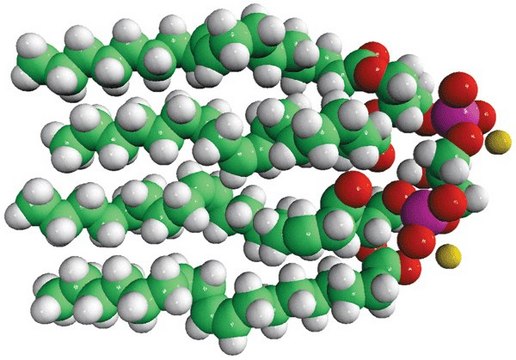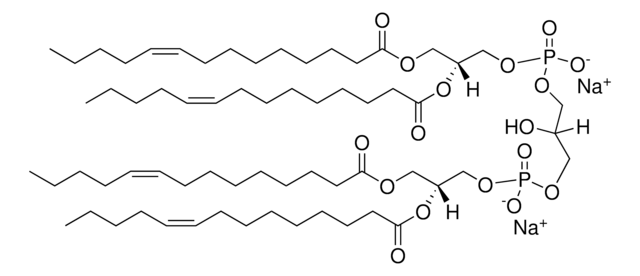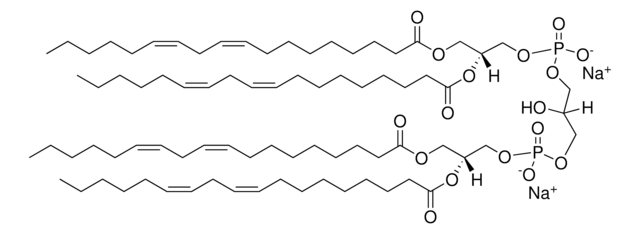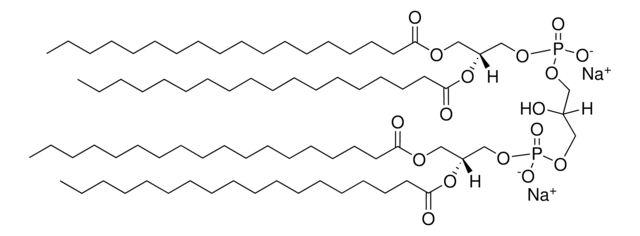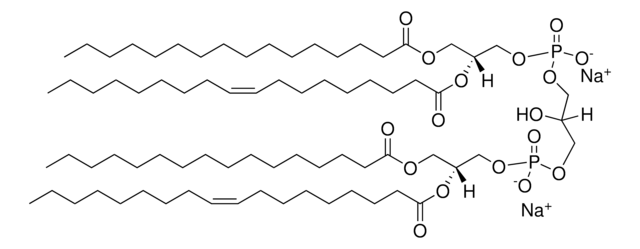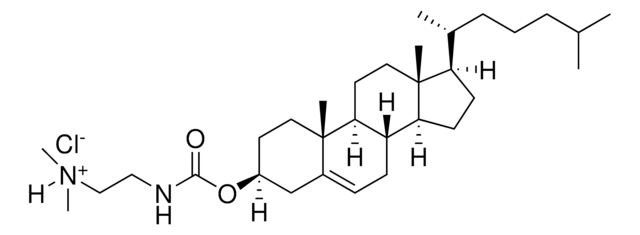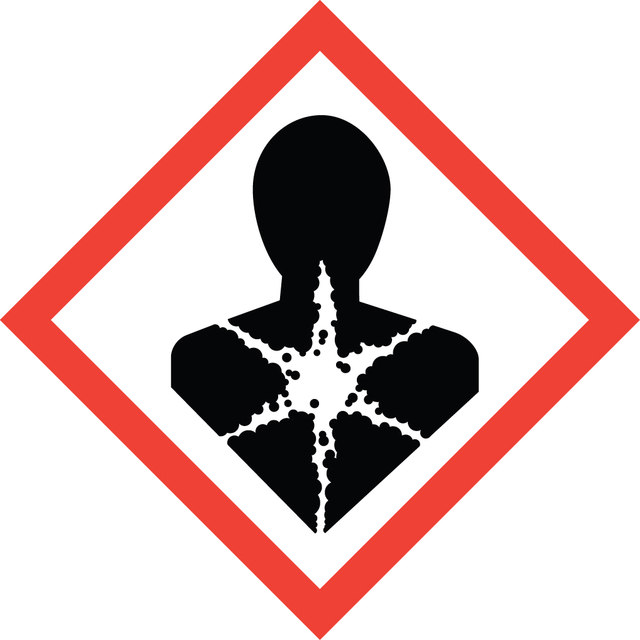710339C
16:1 Cardiolipin
Avanti Research™ - A Croda Brand
Synonym(s):
1′,3′-bis[1,2-dipalmitoleoyl-sn-glycero-3-phospho]-glycerol
About This Item
Recommended Products
description
1′,3′-bis[1,2-dipalmitoleoyl-sn-glycero-3-phospho]-glycerol (sodium salt), chloroform
Assay
>99% (TLC)
form
chloroform solution
packaging
pkg of 1 × 2.5 mL (710339C-25mg)
manufacturer/tradename
Avanti Research™ - A Croda Brand
concentration
10 mg/mL (710339C-25mg)
shipped in
dry ice
storage temp.
−20°C
SMILES string
O=P([O-])(OC[C@]([H])(OC(CCCCCCC/C=C\CCCCCC)=O)COC(CCCCCCC/C=C\CCCCCC)=O)OCC([H])(O)COP([O-])(OC[C@]([H])(OC(CCCCCCC/C=C\CCCCCC)=O)COC(CCCCCCC/C=C\CCCCCC)=O)=O.[Na+].[Na+]
General description
Biochem/physiol Actions
Packaging
Legal Information
Signal Word
Danger
Hazard Statements
Precautionary Statements
Hazard Classifications
Acute Tox. 3 Inhalation - Acute Tox. 4 Oral - Aquatic Chronic 3 - Carc. 2 - Eye Irrit. 2 - Repr. 2 - Skin Irrit. 2 - STOT RE 1 - STOT SE 3
Target Organs
Central nervous system, Liver,Kidney
Storage Class Code
6.1D - Non-combustible acute toxic Cat.3 / toxic hazardous materials or hazardous materials causing chronic effects
WGK
WGK 3
Flash Point(F)
does not flash
Flash Point(C)
does not flash
Regulatory Information
Choose from one of the most recent versions:
Certificates of Analysis (COA)
It looks like we've run into a problem, but you can still download Certificates of Analysis from our Documents section.
If you need assistance, please contact Customer Support.
Already Own This Product?
Find documentation for the products that you have recently purchased in the Document Library.
Our team of scientists has experience in all areas of research including Life Science, Material Science, Chemical Synthesis, Chromatography, Analytical and many others.
Contact Technical Service